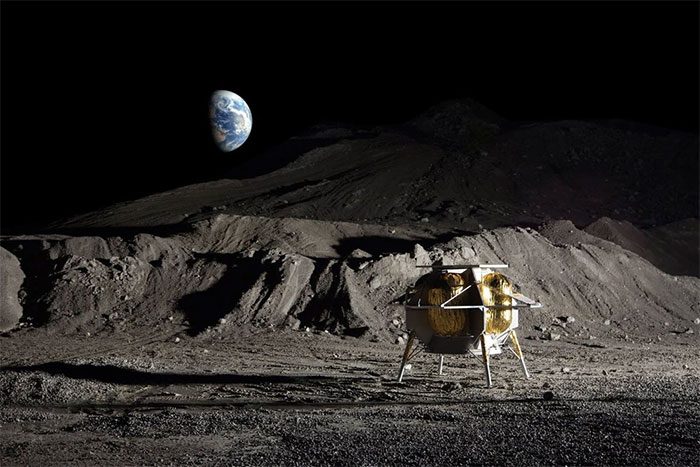Over 50 Years After Apollo: The U.S. Prepares for a Historic Return to the Moon on January 25, 2024.
This ambitious project marks a significant milestone for NASA’s Artemis missions.

Half a century after the last human footprints on the Moon, the U.S. is preparing to return to this celestial body. (Illustrative photo: Space).
Before we set foot on the Moon, NASA will execute a mission to land the Peregrine Lander developed by Astrobotic on this planet on January 25, 2024.
This mission is part of NASA’s Commercial Lunar Payload Services (CLPS) program, which authorizes private companies to send scientific and technological experiments to the Moon.
Astrobotic’s CEO, John Thornton, stated: “We will carry NASA’s research equipment and tools from other research centers to the Moon to study this planetary environment, laying the groundwork for future crewed missions.”
Advanced Technology
The Peregrine mission is evaluated by experts as a significant opportunity to reduce the costs of lunar exploration while addressing new scientific and technical challenges.
John Thornton emphasized that the goal of this mission is to land on the Moon at a considerably lower cost compared to the Apollo missions.
The Peregrine lander stands about 1.80 meters tall and is scheduled to launch on December 24 from Florida using the Vulcan Centaur rocket from United Launch Alliance (ULA).
Fully Automated
The equipment being sent to the Moon includes a neutron spectrometer system, which helps search for signs of frozen water, and a linear energy transfer spectrometer that will gather information about surface radiation on the planet.
The landing will take place in a very special area of the Moon, characterized by ancient basalt lava flows, providing valuable insights for scientists.
Thornton said: “After the spacecraft takes off, it will take several days to reach lunar orbit, with a scheduled landing on January 25 at the designated location.”
This journey is fully automated, meaning that no direct human intervention will be required during the landing process. However, the mission will be closely monitored from Astrobotic’s control center.
This continuous supervision ensures timely intervention by engineers in case of any issues and helps the mission team gather accurate data throughout the mission.
Vision for a Lunar Economy
The Commercial Lunar Payload Services (CLPS) program of NASA represents a strategic initiative aimed at engaging private space companies in lunar exploration.
NASA will authorize space companies to carry out missions, fostering technological innovation and reducing the cost of transporting goods to the Moon through competition.

The Peregrine lander is ready to be launched to the Moon. (Photo: SpaceNews).
The ultimate goal of CLPS is to develop commercial infrastructure on the Moon, paving the way for sustainable economic activities in space.
Chris Culbert, Director of the CLPS program, acknowledged: “While not all missions will succeed, they all play a crucial role in building the lunar economy.
This program will also help test new technologies, accumulate knowledge, and gain experience from missions. These will contribute to developing a lunar ecosystem, supporting future exploration and exploitation.”
The Impact of Peregrine on Artemis Missions
The Peregrine mission is a technological demonstration and a critical precursor to NASA’s Artemis missions.
These missions aim to establish a long-term human presence on the Moon. Thus, the success of Peregrine is significant in validating the technologies and strategies that will be used in upcoming Artemis missions.
Peregrine will provide data about the lunar environment and demonstrate the feasibility of automated landing.
It will also help mitigate risks for the crew and maximize the chances of success for Artemis missions.
Additionally, lessons learned from Peregrine can be utilized in designing future crewed and robotic missions, not only to the Moon but potentially to other destinations, including Mars.


















































